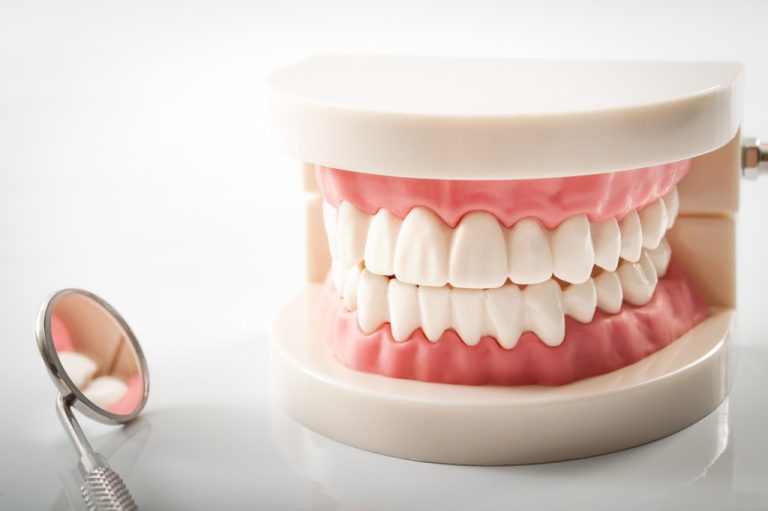- Teeth whitening is a popular and effective way to improve the appearance of one’s smile.
- Causes of yellow teeth can vary, but poor oral hygiene and certain foods and drinks are typically responsible.
- Building good daily habits can help maintain white teeth over time.
- Professional teeth whitening procedures involve bleaching or non-bleaching products.
Teeth whitening is a popular beauty trend that has been around for years. It’s an easy and affordable way to improve the look of your smile, but there are a few things you need to know before you jump in. Here’s a comprehensive guide to teeth whitening, from what it is to the types available and how it works.
What Causes Teeth to Turn Yellow?
The causes of yellowing teeth can vary, but the most common cause is poor oral hygiene. Poor brushing and flossing habits can lead to a buildup of plaque on the surfaces of teeth. Plaque contains bacteria that produce acid and degrade tooth enamel, leading to discoloration. In addition, foods and drinks like coffee, tea, and red wine can all lead to staining or discoloration of teeth. Other reasons may be from aging and intrinsic factors, meaning the cause may be internal. Some examples include trauma, fluoride or tetracycline staining, and certain health disorders.

Daily Habits for White Teeth
Having white teeth is not only aesthetically pleasing but also shows that you are taking care of your oral hygiene. Several daily habits can help improve the whiteness of your teeth, from brushing and flossing regularly to avoiding certain foods and drinks. With a few simple lifestyle changes, you can maintain beautiful pearly whites for years to come!
Brushing Regularly
Regular brushing is one of the critical elements of maintaining good oral hygiene and healthy teeth. Doing it correctly and regularly can help remove plaque buildup from the teeth and prevent cavities, gum diseases, bad breath, and tooth decay. Furthermore, regular brushing helps keep your smile looking its best by removing surface stains from food and drinks that can discolor your teeth.
The type of toothpaste you choose is also essential. Whitening toothpaste is designed to remove surface stains, while other types of toothpaste are formulated for tartar control or sensitive teeth. The main active ingredient in most toothpaste is fluoride, which helps to protect against cavities by strengthening the enamel of teeth.
Limit Smoking
Smoking is a major risk factor for teeth discoloration and other dental problems. The nicotine and tar in cigarettes are known to stain teeth, making them yellow or brown. Smoking also increases the risk of gum disease, cavities, and bad breath. In addition, smoking causes dry mouth, which can lead to tooth decay because saliva cannot wash away bacteria in the mouth. For those reasons, limiting smoking as much as possible is important if you want white teeth.
Hydrate
Hydration is an important factor to consider when aiming for whiter teeth. When properly hydrated, the body produces more saliva, which is essential for removing bacteria from the mouth and preventing plaque from forming. Saliva also helps neutralize acids from food and drinks, which can cause discoloration of the teeth over time. Drinking plenty of water throughout the day will help ensure that your teeth stay healthy and white.

Professional Teeth Whitening
Teeth whitening is a cosmetic dental procedure designed to lighten the color of stained or discolored teeth. Generally speaking, there are two types of teeth whitening—bleaching and non-bleaching. Bleaching involves using special products or procedures to remove deep stains and restore the tooth’s natural color. Non-bleaching products simply help remove surface stains without changing the tooth’s natural color. Regardless of which option you use, clinics will typically offer both dental services and products for your convenience.
Laser Whitening
Laser teeth whitening is a popular and effective method for revitalizing dull, yellowing teeth. While bleaching and non-bleaching products can help remove surface stains, laser teeth whitening is the only procedure that can effectively remove deep stains and restore your tooth’s natural color. The procedure uses laser light energy to break up the molecules that cause staining, resulting in a brighter and whiter smile.
Gel Method
The gel method is a technique that uses a special whitening gel that contains either hydrogen peroxide or carbamide peroxide. This whitening gel is applied directly to the teeth and then activated with a specialized light source, such as LED or halogen lights. The active ingredients in the gel help break down stains on the surface of the teeth and whiten them to a more natural color.
Teeth whitening is an easy and affordable way to improve the look of your smile quickly and effectively. While there are many different types available for various budgets and lifestyles, you must understand all aspects involved before jumping into any treatment plan to decide which option is best suited for you. With this comprehensive guide in hand, you now have everything you need to make an educated decision when it comes time to brighten up those pearly whites!













